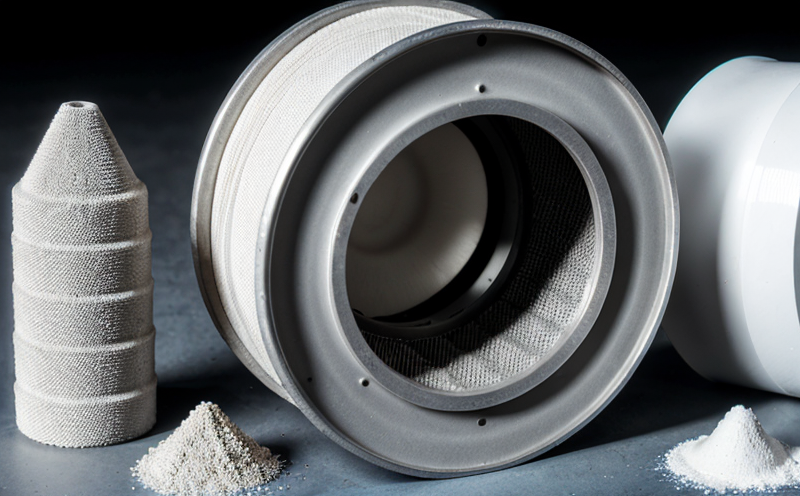EN 50317 Pantograph–Catenary Interaction Compliance Testing
The EN 50317 standard specifies the testing methods for ensuring that pantographs used in electric traction systems comply with the physical and electrical requirements to interact safely and efficiently with catenaries. This service is crucial for manufacturers of overhead contact system (OCS) components, particularly those involved in additive manufacturing (AM). Compliance with EN 50317 ensures that products are safe, reliable, and meet all relevant international standards.
The test aims to assess the structural integrity, electrical performance, and compatibility between pantographs and catenaries. The testing process involves several stages, including specimen preparation, mechanical and electrical testing, and comprehensive analysis of results against specified criteria. This ensures that additive manufactured components are fit for purpose in real-world applications.
For additive manufacturing, the testing protocol must account for the unique properties of materials used in 3D printing processes. These properties can vary significantly from conventional manufacturing methods, necessitating a tailored approach to ensure compliance with EN 50317. The test setup includes specialized fixtures designed to simulate real-world conditions experienced by pantographs in service.
The testing process typically begins with the preparation of specimens according to the dimensions and specifications outlined in the standard. These specimens are then subjected to mechanical tests that evaluate their strength, durability, and fatigue resistance under simulated operating conditions. Electrical tests assess the integrity of connections and insulation properties, ensuring safe operation within the OCS.
Once the initial testing is complete, the data obtained is analyzed against the acceptance criteria specified in EN 50317. This includes evaluating whether the pantograph can withstand the dynamic loads imposed by its interaction with the catenary without compromising safety or performance. Compliance also involves verifying that the electrical characteristics meet the required standards for safe and efficient operation.
The importance of this testing cannot be overstated, especially given the increasing adoption of additive manufacturing in industries reliant on high-performance materials. By adhering to EN 50317, manufacturers can ensure their products are not only innovative but also safe and reliable, thereby enhancing overall product quality and marketability.
The results of this testing play a critical role in ensuring that additive manufactured components meet the stringent requirements set by regulatory bodies. This enhances trust among stakeholders and contributes to the broader goal of improving safety and reliability within the transportation sector.
Benefits
Compliance with EN 50317 offers numerous benefits for manufacturers of marine and ship equipment, particularly those leveraging additive manufacturing technologies. By ensuring that products meet the specified standards, companies can:
- Enhance product safety and reliability in critical applications.
- Avoid costly recalls and legal issues associated with non-compliance.
- Gain competitive advantage through adherence to international standards.
- Facilitate easier market entry into regulated markets.
- Improve brand reputation by demonstrating commitment to quality and compliance.
- Support continuous improvement in product design and manufacturing processes.
In addition, the testing process provides valuable insights into the performance characteristics of additive manufactured components. This information can be used to refine manufacturing techniques and improve overall product quality.
Why Choose This Test
Selecting EN 50317 compliance testing is essential for several reasons:
- Regulatory Compliance: Ensures that products meet the stringent requirements set by international standards, facilitating market access and regulatory approval.
- Safety Assurance: Provides confidence that products will operate safely within their intended environments, reducing risks of accidents or failures.
- R&D Support: Offers valuable data for refining product designs and improving manufacturing processes through detailed testing protocols.
- Quality Control: Ensures consistent quality across production batches, enhancing customer satisfaction and trust in the brand.
- Innovation Facilitation: Encourages the exploration of new materials and technologies by providing a framework for their evaluation.
The comprehensive nature of EN 50317 testing ensures that all critical aspects of pantograph–catenary interaction are thoroughly examined, making it an indispensable tool for ensuring product excellence in this sector.
Competitive Advantage and Market Impact
Adhering to the strict requirements of EN 50317 not only ensures compliance but also provides a competitive edge by:
- Enhancing Reputation: Demonstrating commitment to quality and safety can significantly enhance brand reputation, attracting more customers.
- Promoting Innovation: The testing process encourages the development of new technologies and materials that meet or exceed standard requirements.
- Expanding Market Reach: Compliance with international standards opens up opportunities for selling products in markets with stringent regulatory requirements.
- Reducing Costs: By identifying potential issues early in the production process, companies can avoid costly rework and recalls.
- Increasing Customer Trust: Customers are more likely to choose products that have been rigorously tested and proven to meet high standards of safety and reliability.
The impact on the market is significant, as it fosters a culture of excellence in product development and manufacturing. This ultimately leads to higher quality products, increased customer satisfaction, and long-term business success.





